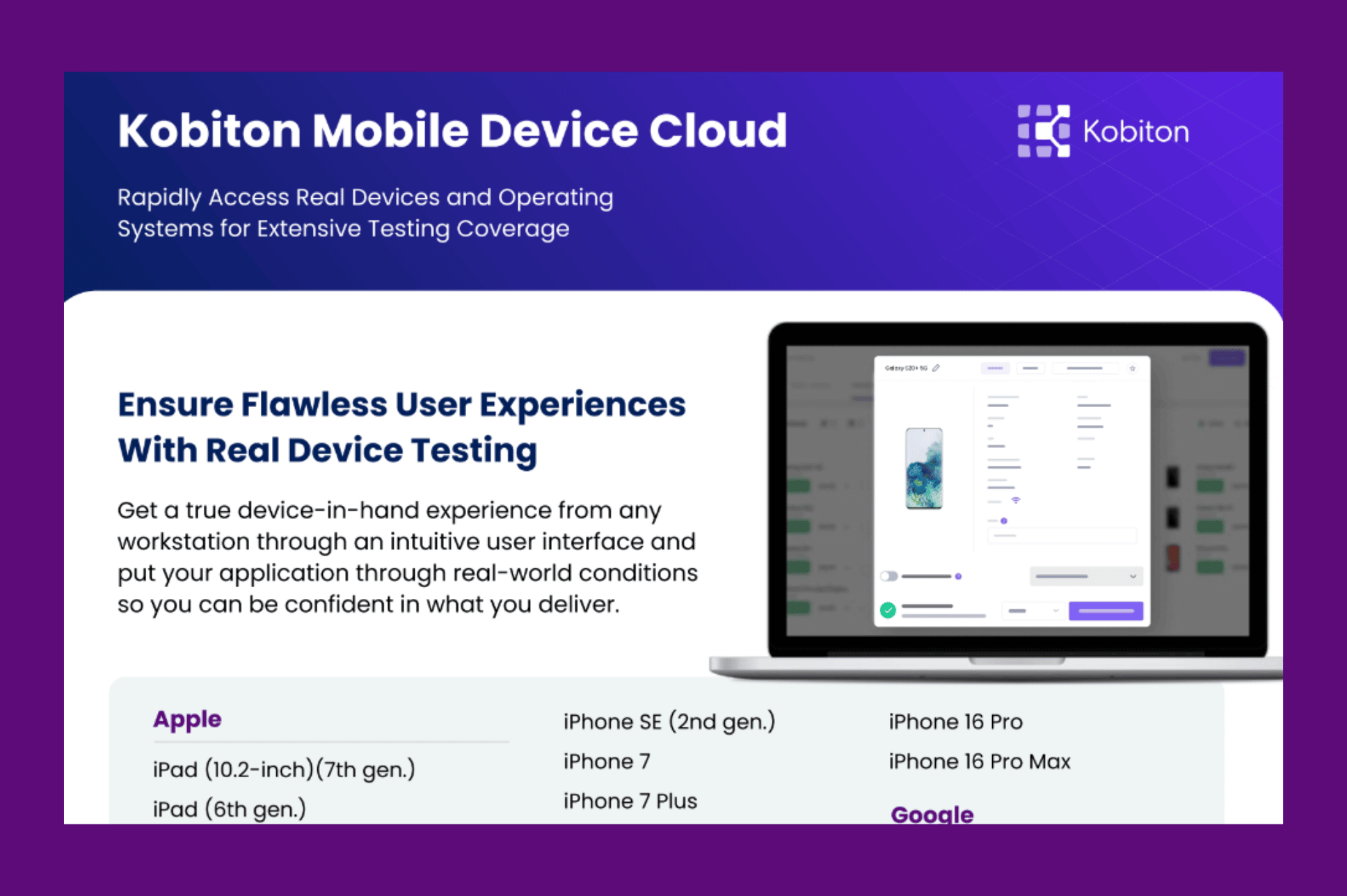
Kobiton Mobile Device Cloud
Erin Bailey, Director of Product Management at Kobiton, discusses how to prioritize screen resolutions for mobile testing. She shares best practices for testing on real devices, including optimizing for common screen sizes, portrait/landscape modes, touch targets, and accessibility. Learn how to ensure a flawless app experience by focusing on the right devices and screen resolutions.

Mobile Screen Device Resolutions
Discover how to master mobile app testing by prioritizing screen resolutions and implementing key best practices.
Hi, I’m Erin Bailey, Director of Product Management at Kobiton. Back again with more on how to master mobile app testing.
Today’s session covers two important topics. How to prioritize which screen resolutions device models to test, and best practices for making sure your mobile app shines on the most common devices for your users. Let’s start with how to prioritize which screen resolutions to test.
Imagine you’re planning a trip around the world. There are so many amazing countries to visit, but you can’t see them all in one go. The same principle applies to mobile testing. You’ve got finite time and resources, so you have to be strategic. First, check your analytics. This is where your journey starts. Look at your user data to see which devices and screen sizes your audience is actually using. If 40 percent of your customers are on a particular iPhone model, you absolutely want that at the top of your list. Next up, market and regional considerations. Different regions favor different phones. If you have a strong user base in Southeast Asia, you might need to pay special attention to budget-friendly Android devices with 720 by 1600 resolutions. Third, understand the business impact of devices. If a big chunk of your revenue comes from a specific device type, testing that device thoroughly is a no-brainer to prevent costly user drop-offs or car abandonments. Fourth, where is your company in its life cycle? Are you a brand new startup just trying to cover the basics or a more mature company refining your approach?
Younger products might opt for broader coverage first, while established teams can refine based on historical data.
Lastly, do you have foldable and tablet use cases? Folding devices might still be a niche, but if your brand prides itself on innovation, don’t skip them. Tablets often dominate certain industries like healthcare or hospitality. It’s vital to test there if you serve those sectors.
Next, let’s talk about best practices for testing common screen resolutions, because once you’ve chosen which countries to visit, you want to make the most of each trip.
Following these prioritization tips and best practices will help you determine the breadth and depth of mobile device models to test for your users to have an amazing app experience.
I hope this helps you refine your mobile app testing strategy. Be sure to check out our blog Common Screen Resolutions for Mobile Testing which is linked in the notes for more insights and to try out a neat widget where you can visually compare screen resolutions of different device models.